Detail of senior float, 1917
WW I Era University Archives Photos Featured in New Buehler Exhibit
A new exhibit titled “A Salute to All Our Veterans” opens Thursday, September 6th at UC Davis’ Walter A. Buehler Alumni Center, timed to honor and celebrate the centenary of the end of World War I on Nov. 11, 1918. The exhibit is one of two opening consecutively at the center, both of which have been organized and curated by Aggie alumni Bill Hollingshead (’60) and Sharon Dianne Hollingshead (’63). “A Salute to All of Our Veterans,” and it’s companion, “The Art and Heart of Being an Aggie,” feature paintings by Sharon Dianne Hollingshead and works by renowned photographer Paul W. Hollingshead, Bill’s father.
The University Archives, housed in the Special Collections department in Shields Library, is pleased to contribute several historical photographs to the exhibit that capture UC Davis’ response to World War I, back when the campus was known as the University Farm. Editorials at the time in the University Farm Agricola, the predecessor to the California Aggie, claimed that students were more valuable to the war effort as farmers than as soldiers, citing the critical role that efficient food production would have in the conflict.
Picnic Day, 1917
Picnic Day is the campus’ annual open house, drawing thousands of visitors from the region. Picnic Day of 1917 was held a mere three weeks after the US declared war on Germany. The usual emphasis on the University Farm’s innovative approach to agriculture and animal husbandry was quickly transformed into a patriotic rally celebrating the necessity of food growing to the war effort. Speaking at the Picnic Day eve bonfire, John Neylan, President of the State Board of Control, described the conflict as a “farmer’s war,” stating that “it is the patriotic duty of every farmer to grow the maximum amount of food that his land will produce.” Several floats in the parade made reference to this theme and American flags were everywhere.

The prize-winning Senior float features five young women, one depicting a martial “Columbia,” the historical female personification of America. The sign on the float reads “California Agriculture will defend Columbia.” Harold Phillips drives a team of Belgian mares noted for their first prize at the 1916 California State Fair.
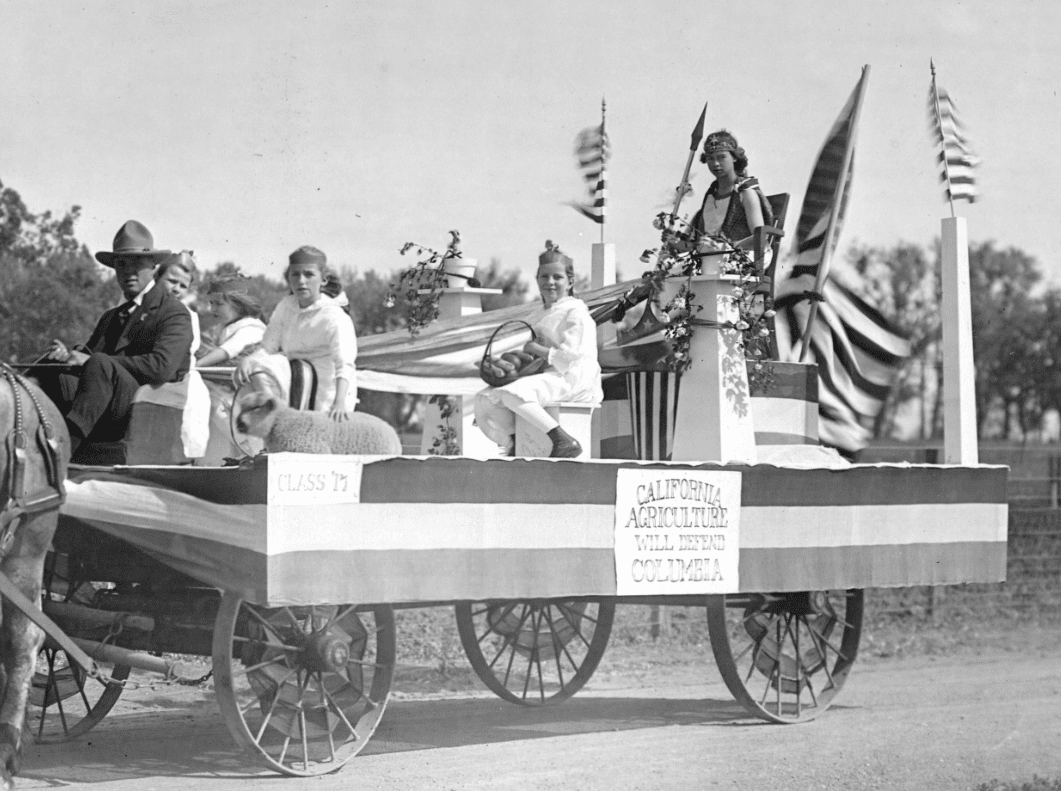
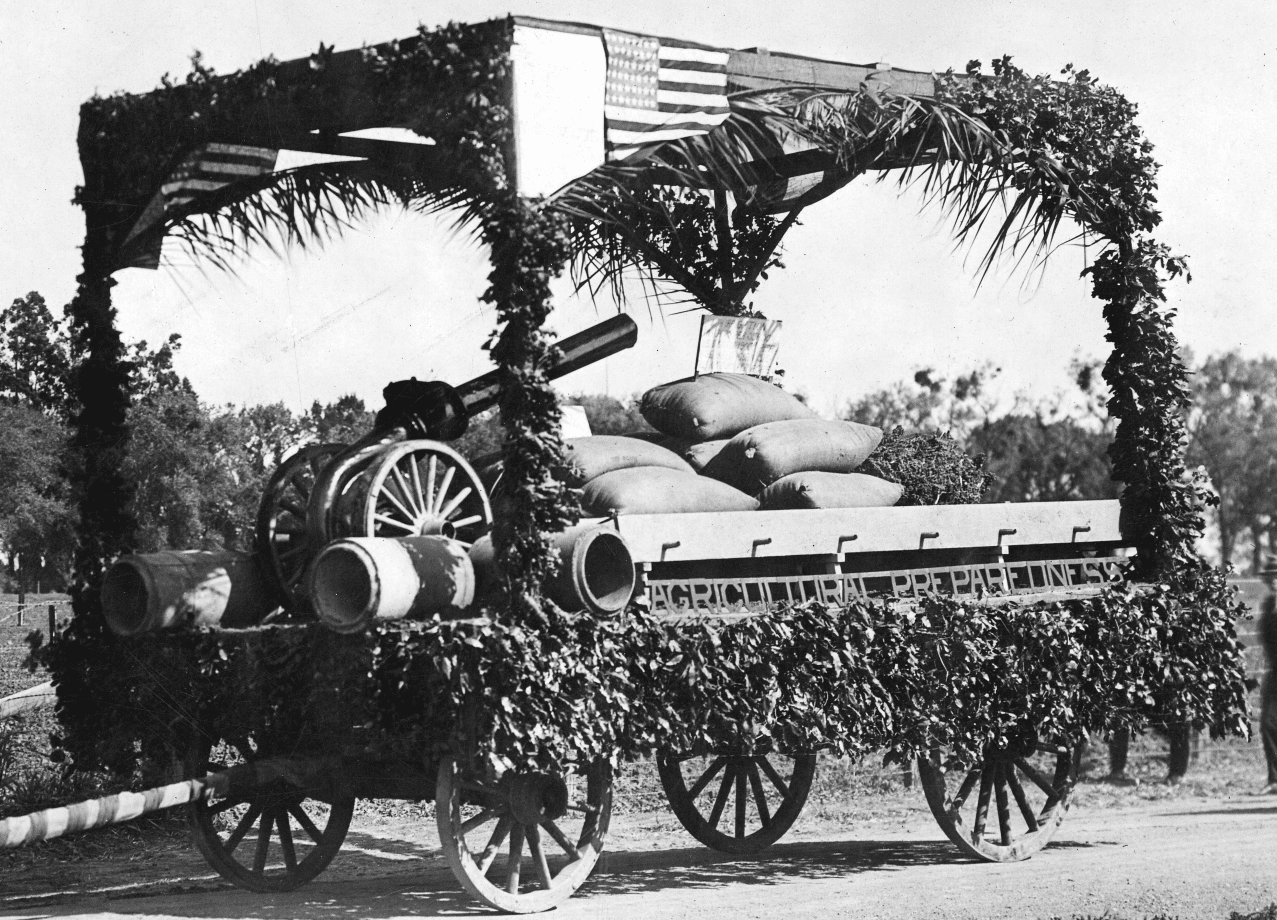
The Irrigation float pulled by a Sandusky tractor was another prize winner. The lettering on the side of the float reads “Agricultural Preparedness” and the irrigation piping appears among sandbags like a canon.
Field Labor and Agricultural Education
In 1918, female students were admitted to the Farm School for the first time, as traditional gender roles in agricultural were challenged by the call to war. These “farmerettes” proved that women could step into active roles in agriculture, sustaining the nation’s level of food production should men continue to leave for the battle lines in Europe (Scheuring, Abundant Harvest, 2001).
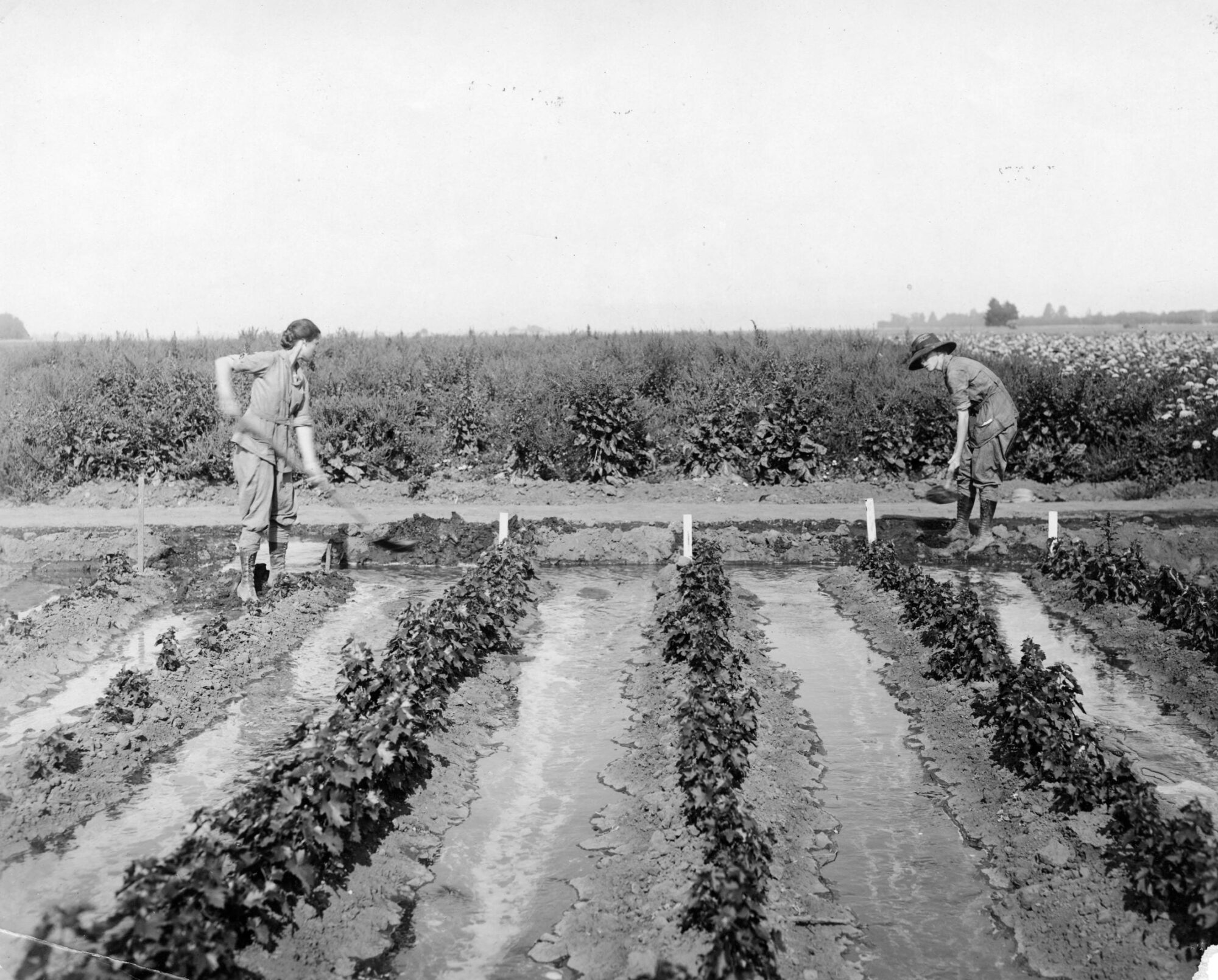
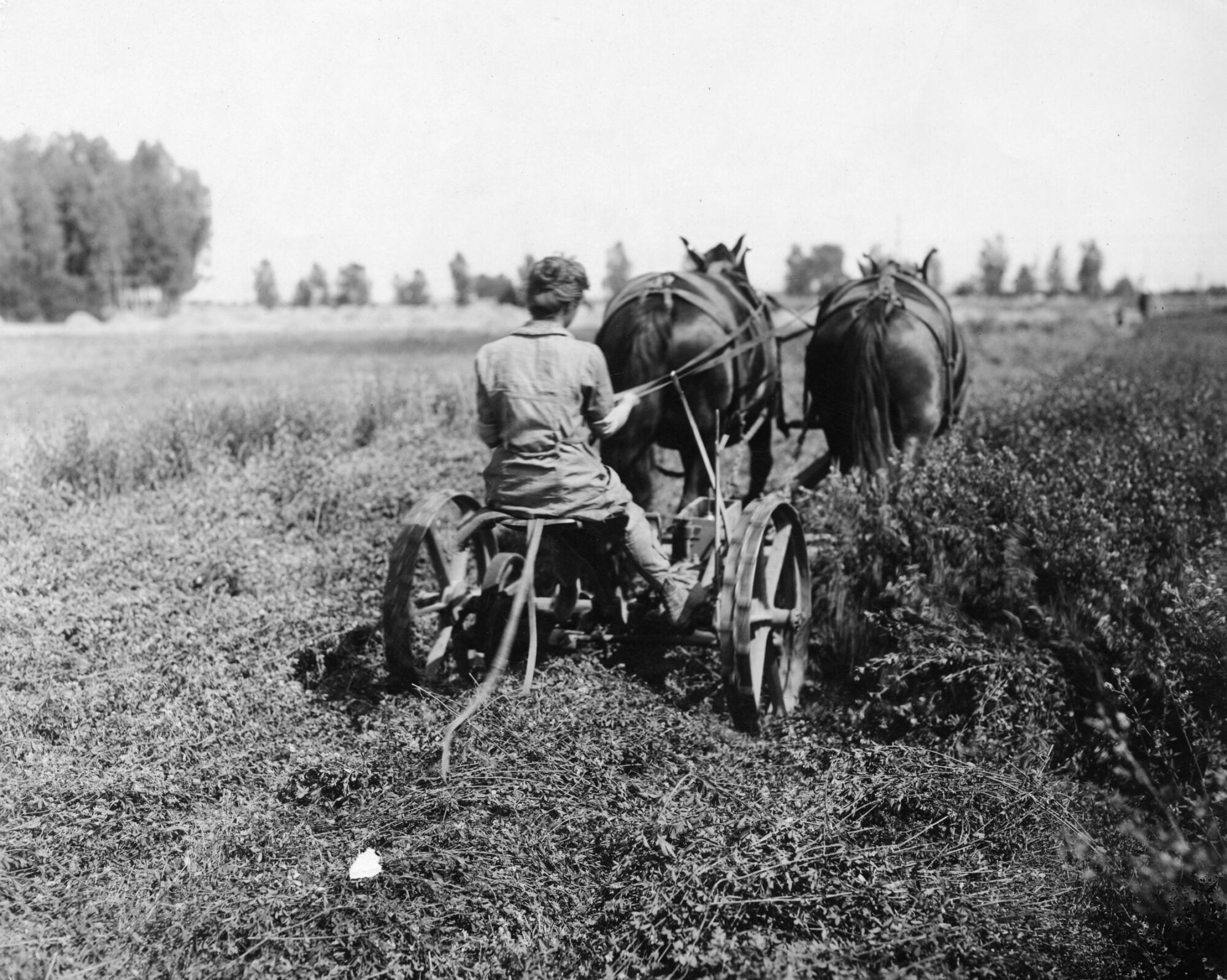
A Call To Arms
In fall of 1917, participation in military drill became required of students on the University Farm. Three companies drilled for military preparedness and general exercise for good health.
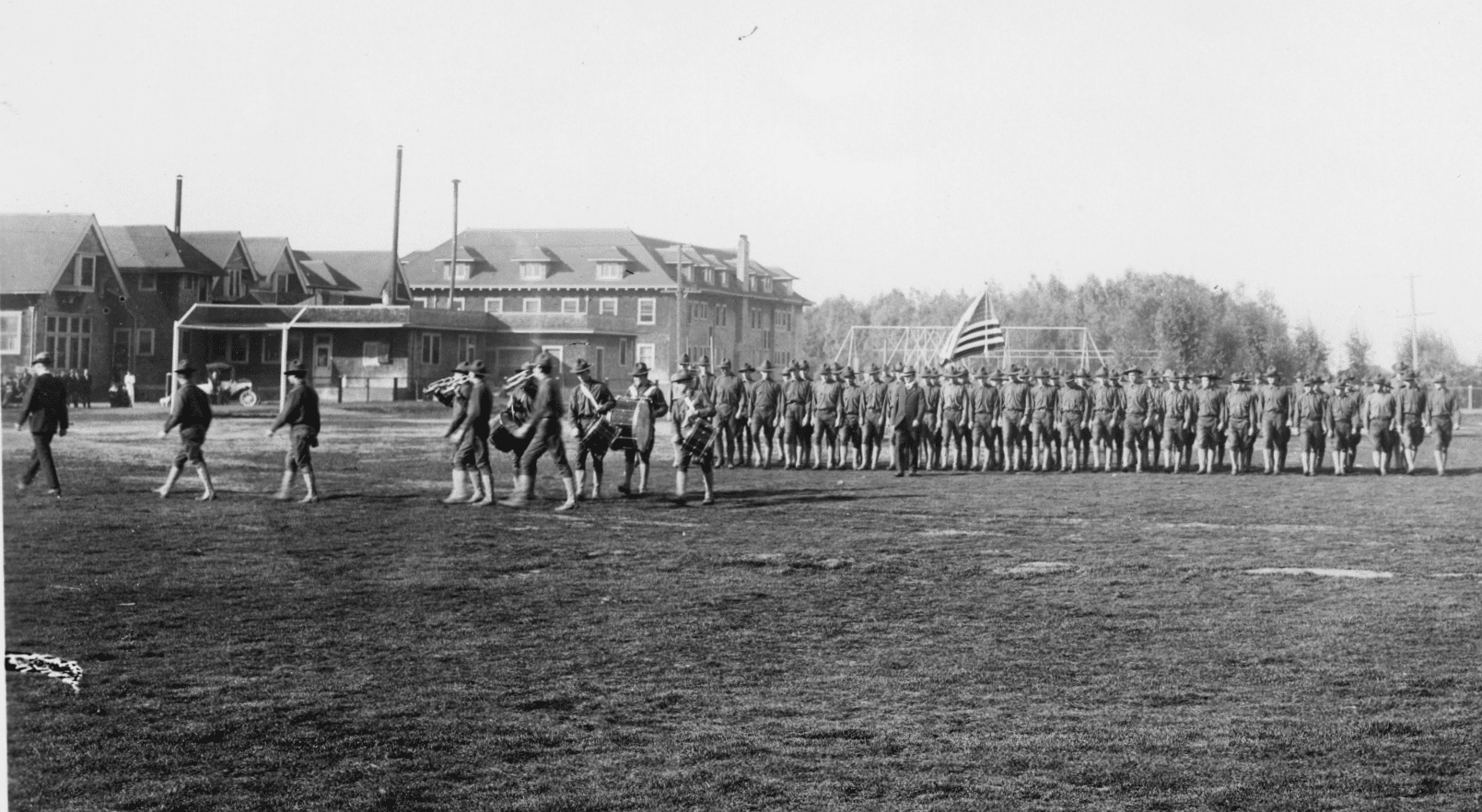
In this photograph, the military science battalion runs a drill at the University Farm in 1918. The battalion can be seen near the present-day location of Hickey Gym. East Hall and West Hall, later razed for the Memorial Union, are in the background.
Please click here for more information on both exhibits.
Please click here for more information on the University Archives Photograph Collection.